
Overview
This article presents a comprehensive comparison between Google Ads and Bing Ads, asserting that Google Ads clearly dominates the market due to its superior reach and advanced targeting options. This makes it particularly advantageous for brands aiming to connect with younger demographics. Conversely, Bing Ads stands out for its cost-effectiveness and unique targeting features, which are especially beneficial for budget-conscious advertisers and B2B campaigns. The analysis is robustly supported by:
- Performance metrics
- Cost comparisons
- Case studies that illustrate how direct-to-consumer brands can optimize their advertising strategies to align with their specific audience and objectives.
Introduction
The digital advertising landscape is dominated by two key players: Google Ads and Bing Ads. Google captures over 90% of the market share, and its extensive features and targeting options establish it as the go-to choice for many brands. However, Bing, often overlooked, presents unique advantages, particularly for budget-conscious direct-to-consumer (DTC) brands.
As these companies navigate the complexities of online advertising, the pressing question arises: which platform truly delivers the best return on investment?
This article delves into the critical insights that DTC brand owners must consider when weighing the benefits and drawbacks of Google Ads versus Bing Ads.
Overview of Google Ads and Bing Ads
In the context of Google Ads vs Bing Ads, Google Ads commands the search engine advertising landscape with over 90% market share and offers a diverse range of ad formats, including search, display, video, and shopping ads. Its sophisticated targeting options and expansive reach position it as the preferred choice for numerous brands.
Conversely, in the discussion of Google Ads vs Bing Ads, the alternative advertising platform, which captures a smaller market share of approximately 3-5%, is recognized as a cost-effective solution, particularly for B2B and desktop-centric campaigns. The integration of this search engine with Microsoft services introduces unique targeting capabilities, such as LinkedIn profile targeting, which can be advantageous for specific advertisers.
While both platforms provide robust analytics tools, Alphabet's advertising service is typically lauded for its and optimization features.
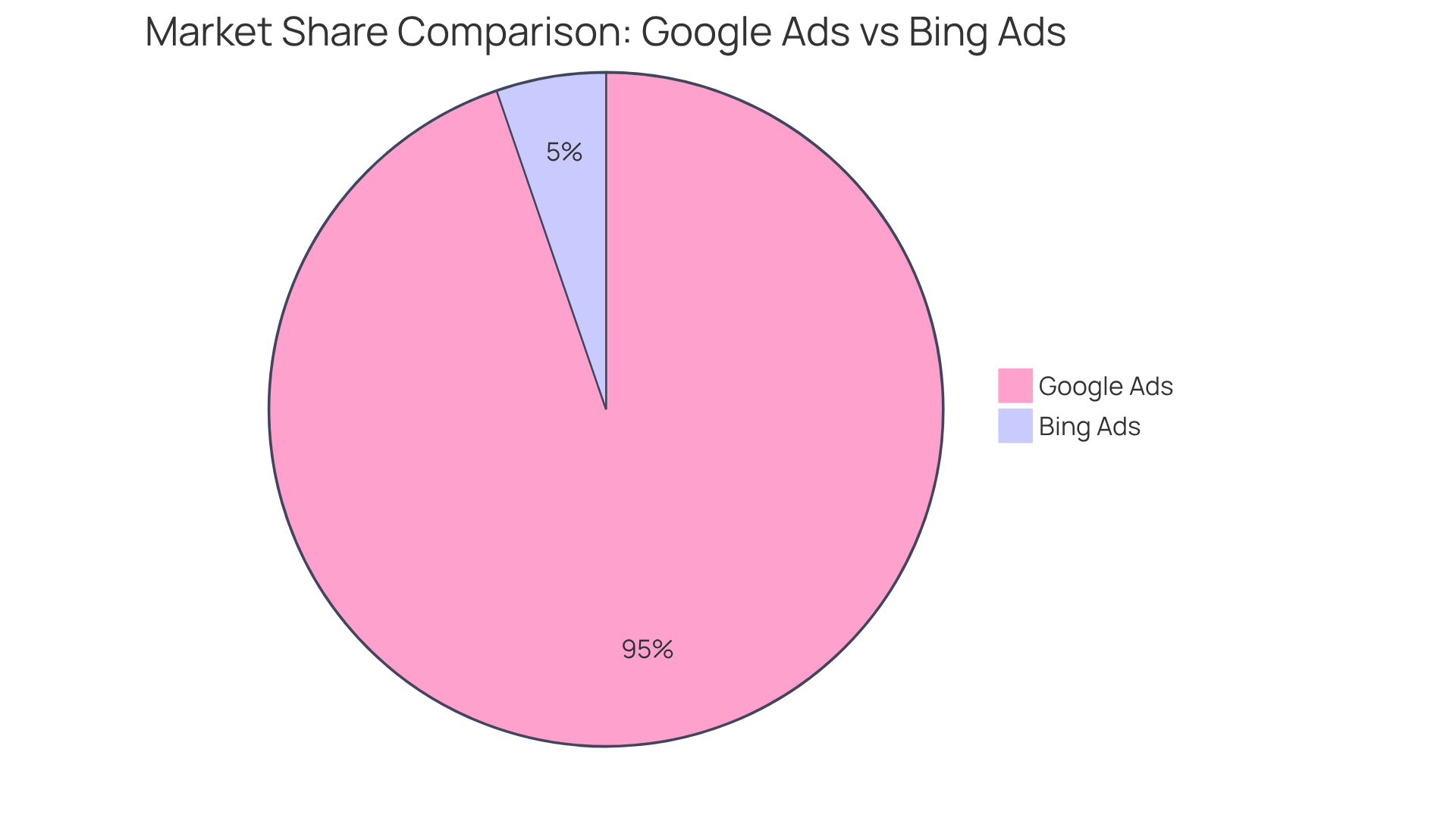
Performance Metrics: Click-Through Rates and Conversion Rates
In 2025, a major online advertising platform achieves an impressive average click-through rate (CTR) of approximately 3.17%, while another platform closely follows with a slightly lower average of around 2.83%. However, the conversion rates present a more nuanced picture when comparing Google Ads vs Bing Ads: Google Ads typically records a conversion rate of 3.75%, in contrast to Bing Ads' 2.94%. This disparity indicates that while Bing may attract less traffic, it can still be .
For direct-to-consumer (DTC) companies, understanding their target audience and product type is essential when interpreting these metrics. A higher CTR on Google does not necessarily guarantee a better return on investment (ROI) if the conversion rates do not align with expectations. Therefore, companies should strategically evaluate Google Ads vs Bing Ads to enhance their advertising initiatives and increase profitability.
At Parah Group, we have successfully transformed DTC product profitability through innovative conversion rate optimization (CRO) strategies. For instance, we assisted a $30M apparel company in boosting its conversion rate by 35% and revenue per visitor by 10% through strategic homepage redesigns and optimized pricing. Similarly, our collaboration with a $15M cleaning product company resulted in an 80% rise in average order value (AOV) by implementing efficient bundling strategies and free shipping thresholds.
These case studies illustrate how customized CRO strategies can significantly improve profitability and foster sustainable growth for direct-to-consumer companies.
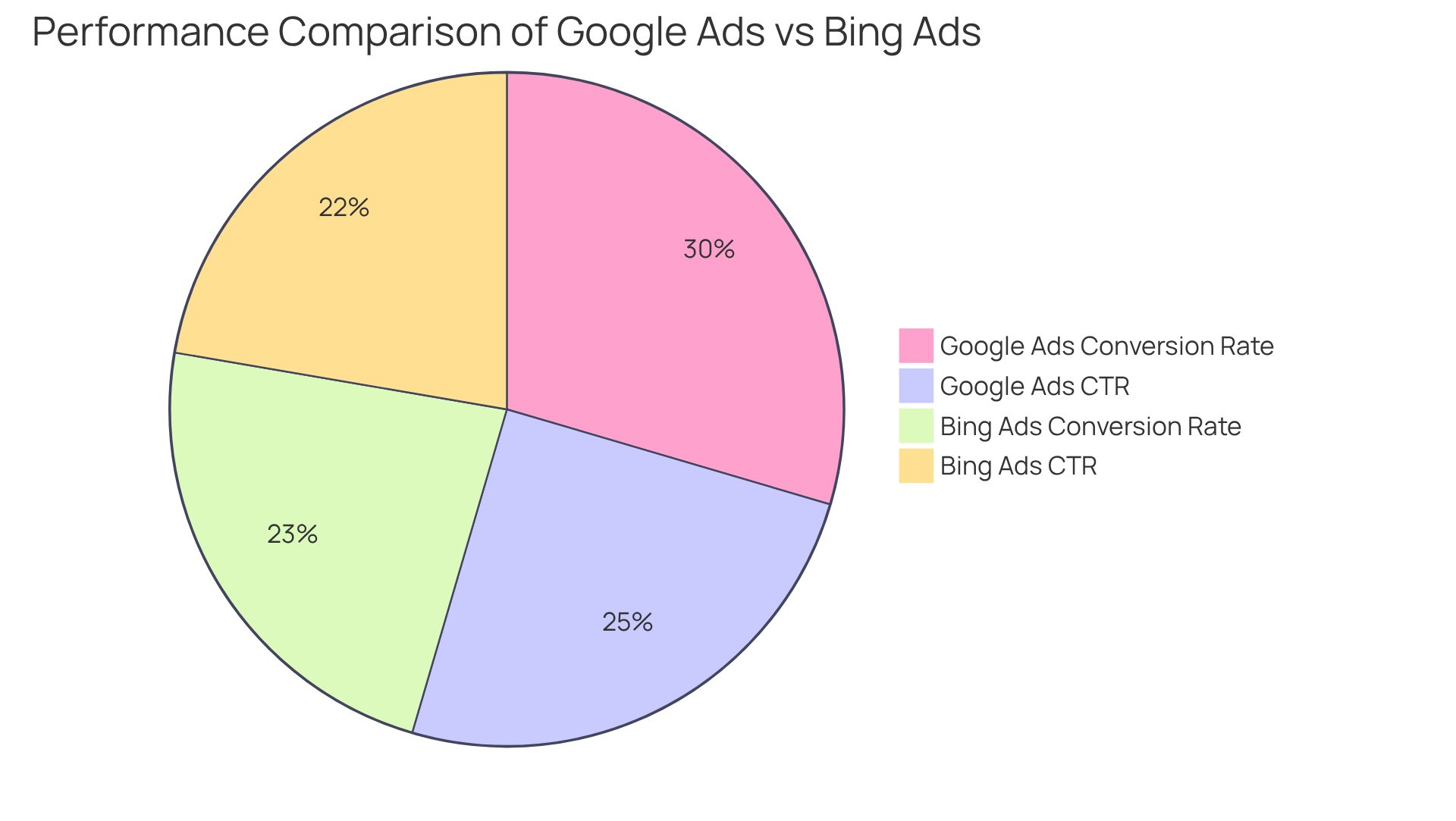
Cost Analysis: CPC and Budget Efficiency
Search Ads present a notably economical option for direct-to-consumer companies, with an average cost-per-click (CPC) of approximately $1.45—significantly lower than other advertising platforms, which range from $2.85 to $5.26. This cost efficiency is particularly appealing for brands operating under tighter budgets.
However, evaluating overall budget efficiency is crucial; while the lower CPCs of one platform may be enticing, another advertising service frequently delivers higher conversion rates, averaging around 3.75% compared to 2.95% on the first platform, which can offset the increased costs.
Furthermore, when considering Google Ads vs Bing Ads, the latter boasts a 20% lower cost-per-acquisition (CPA), further enhancing its attractiveness for budget-sensitive campaigns.
To maximize profitability, direct-to-consumer (DTC) companies must consider not only these cost metrics but also implement comprehensive . By aligning their paid advertisements and landing pages through rigorous testing and data-driven insights, companies can significantly boost their conversion rates and overall return on investment.
Therefore, DTC brands should meticulously evaluate their specific market dynamics and campaign objectives to determine which platform offers the best return on their advertising investment when considering Google Ads vs Bing Ads. Additionally, considering a unified approach that leverages both search engine advertising platforms can yield synergistic benefits, enhancing reach and improving ROI.
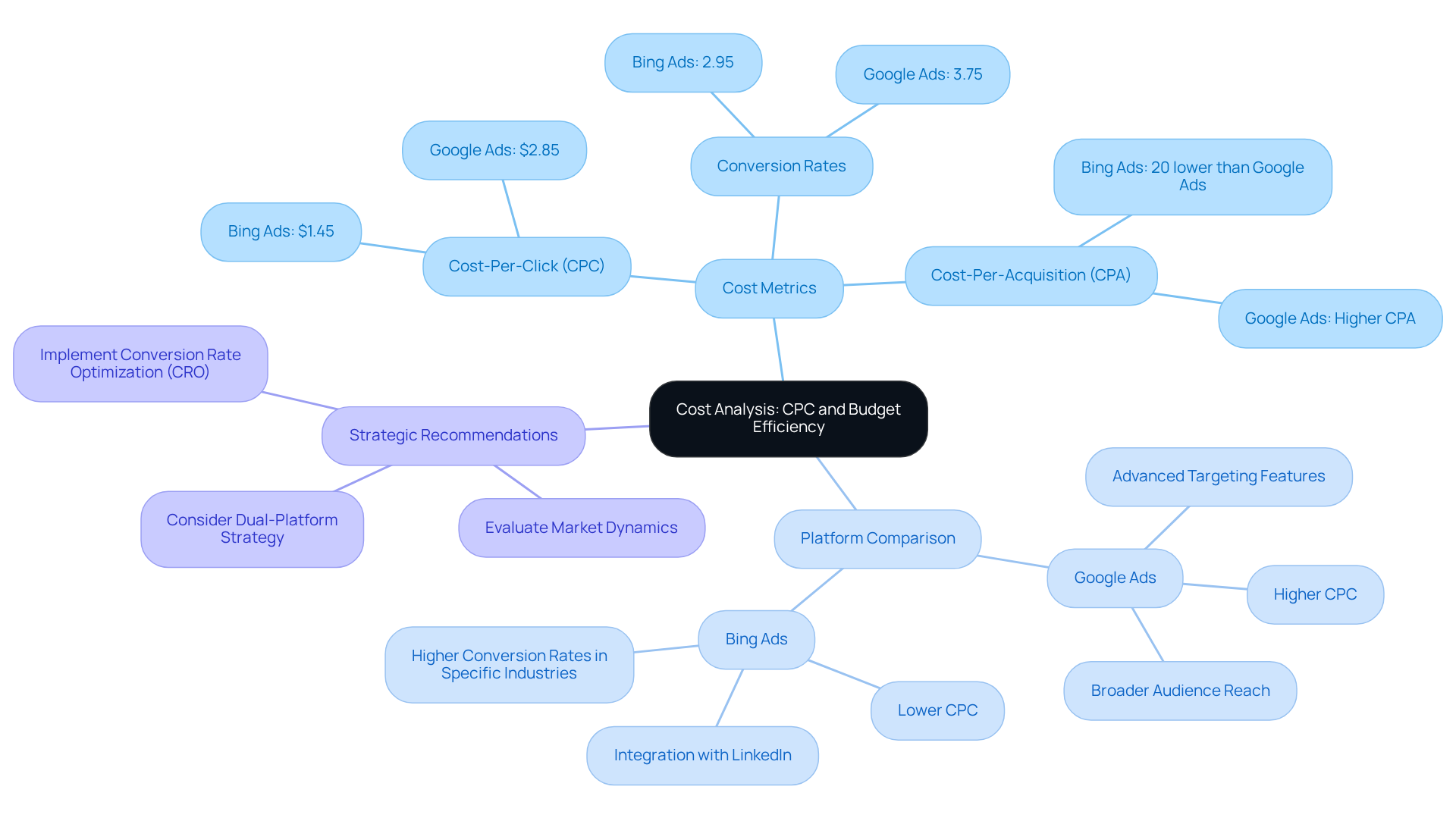
Targeting Options: Audience Reach and Demographics
Google Ads presents a robust array of targeting options, encompassing demographic targeting, geographic targeting, and audience segmentation based on user behavior. This comprehensive approach empowers companies to effectively connect with specific customer segments.
For example, case studies from Parah Group illustrate that by optimizing product pricing and emphasizing social proof, businesses can significantly enhance conversion rates. A notable instance is a $30M clothing line that achieved a remarkable 35% increase in conversion rates through strategic homepage redesigns.
Conversely, while Microsoft's advertising platform may have a smaller audience reach compared to Google Ads vs Bing Ads, it offers distinctive targeting features, such as LinkedIn profile targeting, which can be particularly advantageous for B2B campaigns.
Importantly, over 70% of search engine users are aged 35 or older, with an average age of around 45. This demographic insight positions Microsoft's platform as a potentially better match for specific DTC companies seeking to engage this audience.
Furthermore, this advertising platform typically boasts a lower cost per click compared to its counterpart, providing a cost-effective solution for budget-conscious companies. Understanding these demographics and cost efficiencies is crucial for businesses aiming to and enhance engagement.
For instance, Parah Group successfully assisted a cleaning product company in increasing their average order value by 80% through targeted strategies.
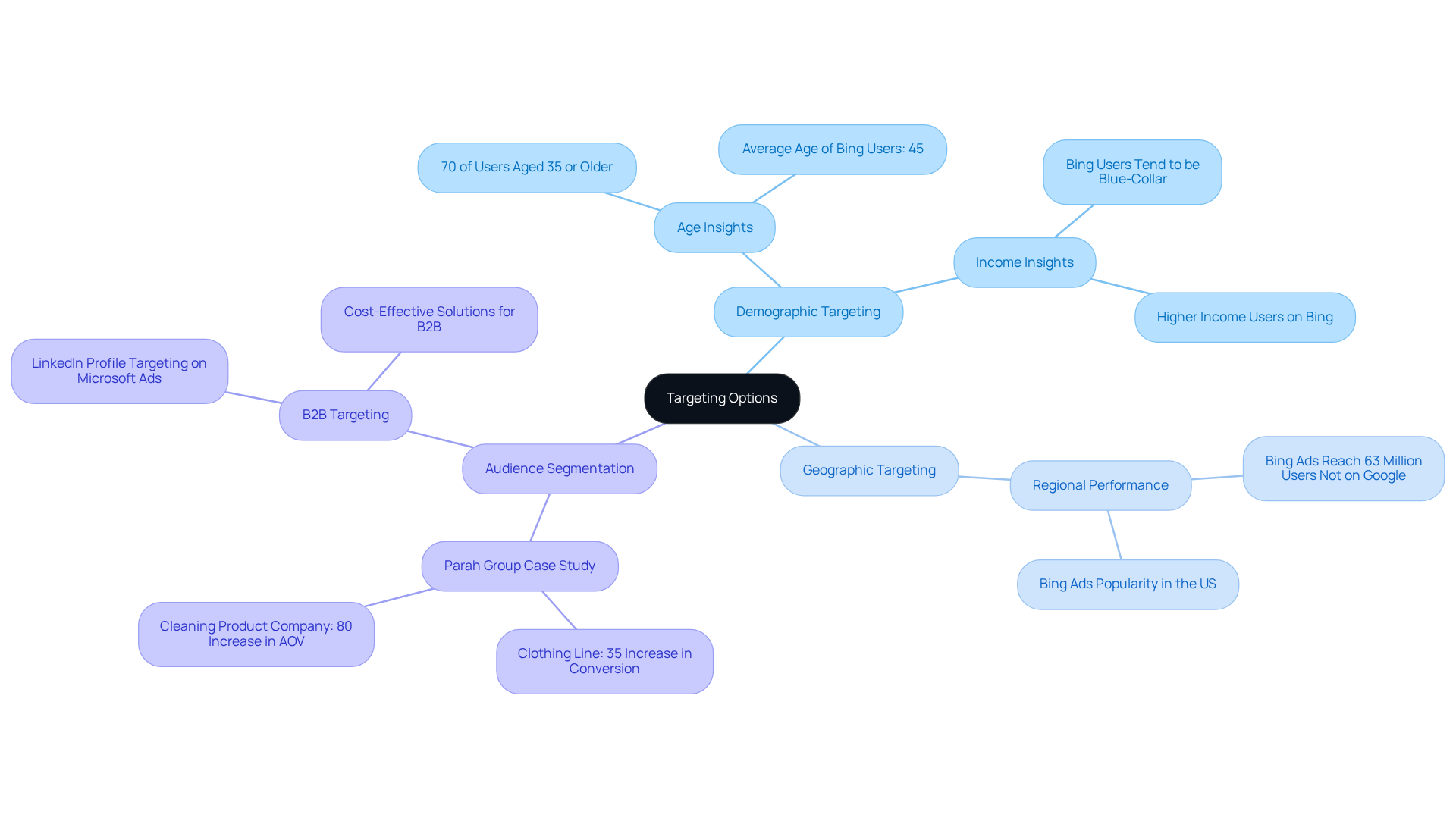
Choosing the Right Platform: Suitability for DTC Brands
For direct-to-consumer companies, the decision between search engine advertisements and alternative platforms hinges on a profound understanding of their target audience and marketing objectives. Google Ads stands out by offering extensive reach and advanced targeting options, making it particularly effective for companies focused on engaging younger demographics. Conversely, Microsoft Advertising presents an attractive option for companies with limited budgets or those targeting older demographics, especially in B2B sectors.
To maximize campaign effectiveness, companies should implement across both platforms. This strategic approach enables them to assess performance metrics and determine which platform aligns best with their specific objectives. Success stories from businesses that have effectively utilized A/B testing in the context of Google Ads vs Bing Ads underscore the potential for significant enhancements in conversion rates and return on investment. Parah Group, a leader in Conversion Rate Optimization (CRO), delivers tailored strategies that have achieved a remarkable 36% increase in ROI on ads for their clients. Our comprehensive services encompass analysis, A/B testing, and ongoing optimization, ensuring sustainable growth and profitability.
By leveraging the unique advantages of each platform, DTC companies can significantly enhance their overall marketing performance and achieve their growth targets. Are you ready to elevate your DTC brand? Contact Parah Group today to discover how our customized CRO strategies can drive sustainable growth and profitability.
FAQs:
- What is Conversion Rate Optimization (CRO)?
CRO is the process of refining your website to boost conversions, transforming more visitors into customers. - Why should we launch a CRO program?
An ongoing CRO program facilitates data-driven decisions that contribute directly to your business growth, while simultaneously reducing customer acquisition costs and enhancing profitability.
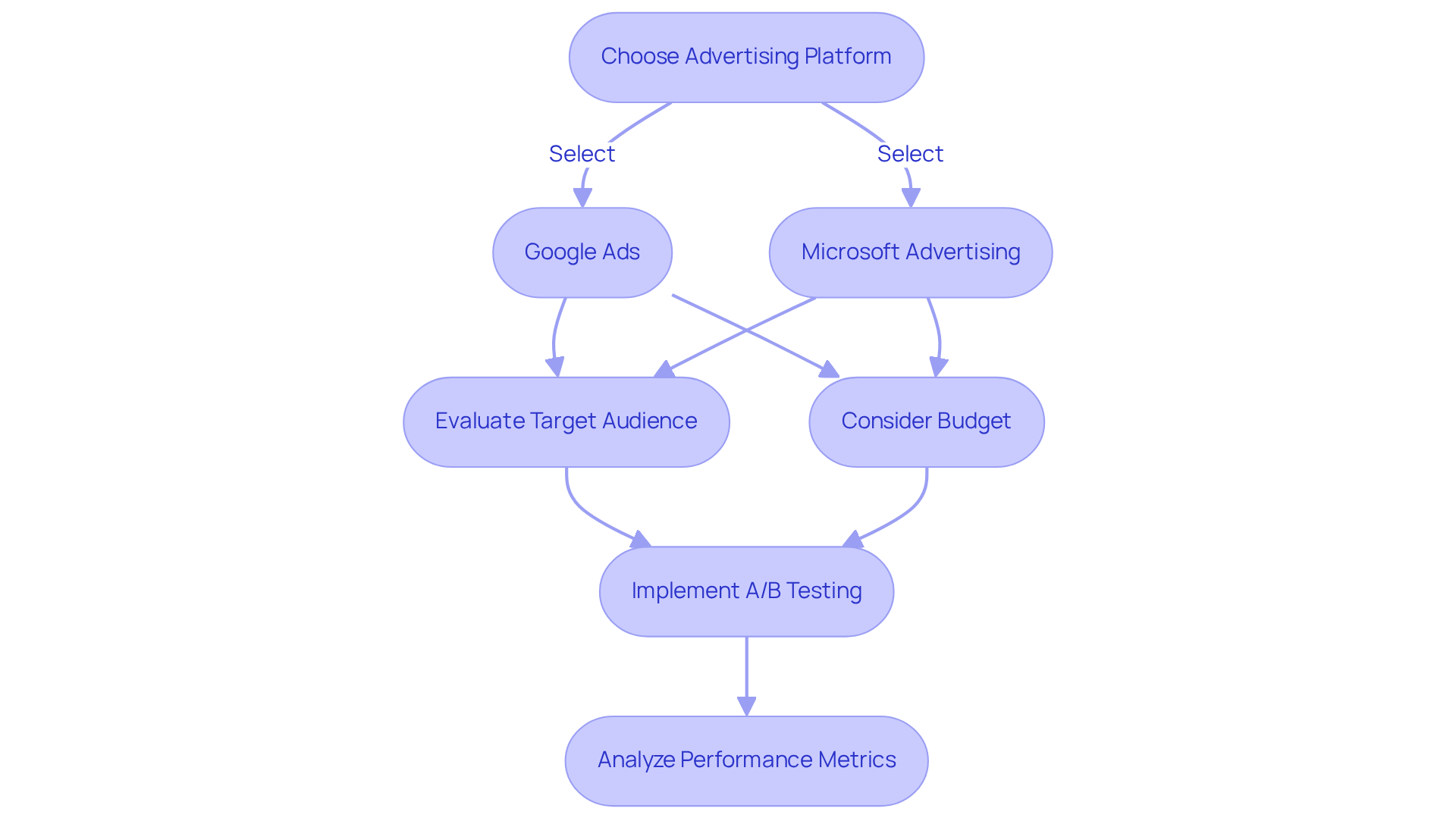
Conclusion
Understanding the dynamics between Google Ads and Bing Ads is crucial for direct-to-consumer (DTC) brand owners who seek to optimize their advertising strategies. Google Ads, with its extensive market share and diverse ad formats, offers unparalleled reach and sophisticated targeting capabilities. In contrast, Bing Ads presents a cost-effective alternative, particularly beneficial for B2B campaigns and brands targeting older demographics.
Throughout this article, key insights have been highlighted, including:
- The comparative performance metrics of click-through and conversion rates
- The cost analysis of CPC and CPA
- The unique targeting options available on both platforms
The importance of aligning advertising strategies with specific business objectives and audience demographics has been emphasized, underscoring the necessity for DTC brands to leverage A/B testing and Conversion Rate Optimization (CRO) strategies to enhance profitability.
Ultimately, the choice between Google Ads and Bing Ads should be informed by a thorough understanding of market dynamics, audience behavior, and campaign goals. DTC brands are encouraged to evaluate their unique needs and consider a dual-platform approach to maximize advertising effectiveness. By harnessing the strengths of both platforms, brands can significantly enhance their marketing performance and achieve sustainable growth.
Frequently Asked Questions
What is the market share of Google Ads compared to Bing Ads?
Google Ads commands over 90% of the search engine advertising market share, while Bing Ads captures approximately 3-5%.
What types of ad formats does Google Ads offer?
Google Ads offers a diverse range of ad formats, including search, display, video, and shopping ads.
What are the advantages of using Bing Ads?
Bing Ads is recognized as a cost-effective solution, particularly for B2B and desktop-centric campaigns, and offers unique targeting capabilities, such as LinkedIn profile targeting.
How do the analytics tools of Google Ads and Bing Ads compare?
Both platforms provide robust analytics tools, but Google Ads is typically lauded for its superior data insights and optimization features.
What are the average click-through rates (CTR) for Google Ads and Bing Ads?
In 2025, Google Ads has an average CTR of approximately 3.17%, while Bing Ads has a slightly lower average of around 2.83%.
How do conversion rates compare between Google Ads and Bing Ads?
Google Ads typically records a conversion rate of 3.75%, whereas Bing Ads has a conversion rate of 2.94%.
Why is it important for direct-to-consumer (DTC) companies to understand their target audience when interpreting CTR and conversion rates?
A higher CTR on Google does not guarantee a better return on investment (ROI) if the conversion rates do not align with expectations, making it essential for DTC companies to strategically evaluate both platforms.
Can you provide examples of successful conversion rate optimization (CRO) strategies?
Yes, Parah Group helped a $30M apparel company boost its conversion rate by 35% and revenue per visitor by 10% through strategic homepage redesigns and optimized pricing. They also assisted a $15M cleaning product company in achieving an 80% rise in average order value (AOV) by implementing efficient bundling strategies and free shipping thresholds.
FAQs











